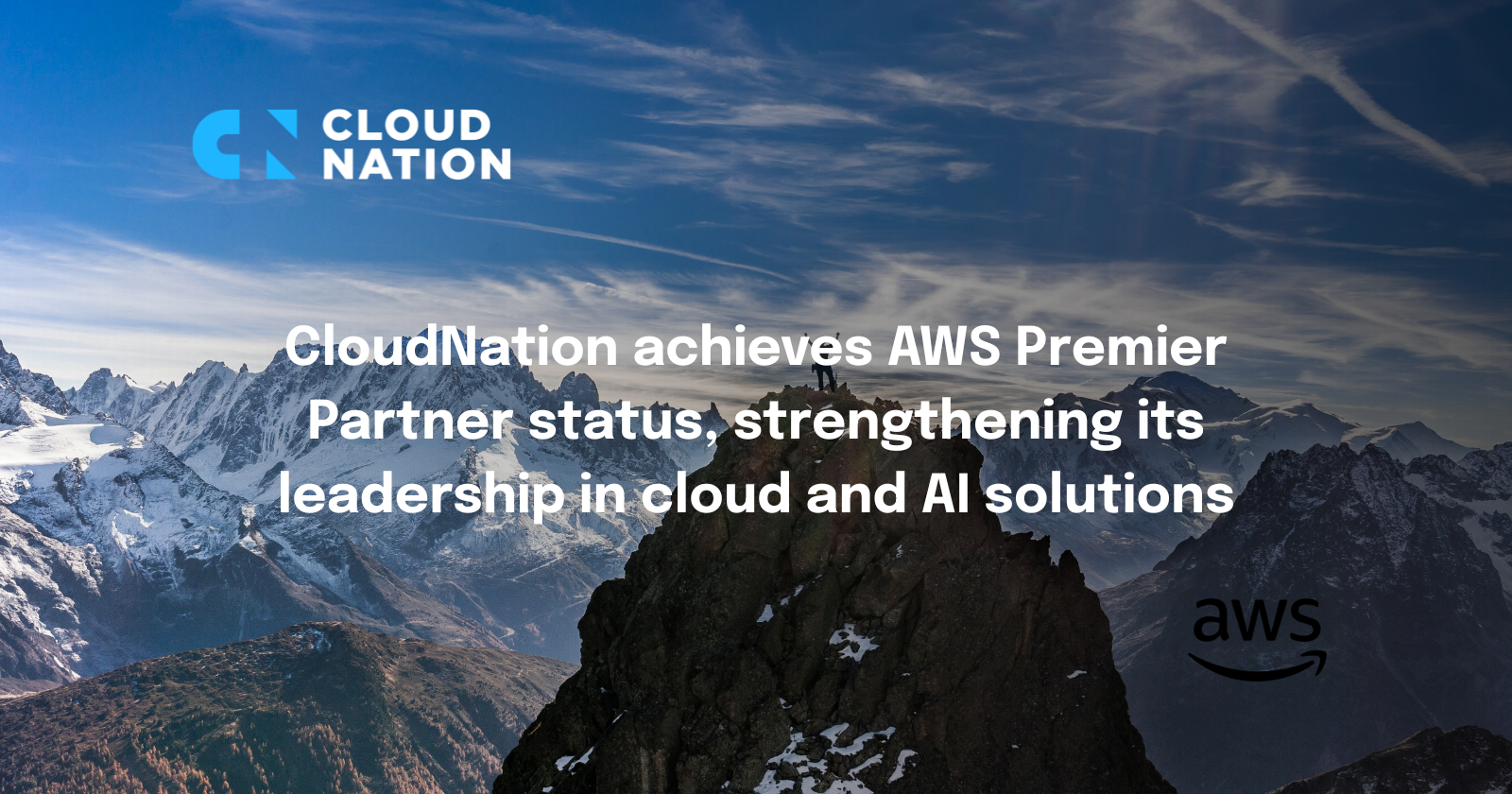The dust has settled on re:Invent 2024, but the echoes of Werner Vogels' keynote continue to resonate through the AWS community. Like a fine whiskey, the insights shared by Amazon's CTO are maturing with time, offering a timeless blueprint for building and scaling complex systems.
Dr. Werner Vogels delved into the intricate dance between simplicity and complexity, emphasizing the importance of strategic design, organizational alignment, and a relentless pursuit of evolvability. As we embark on a new year, it's time to revisit these principles and apply them to our own architectural endeavors.
A Masterclass in System Design
Dr. Werner Vogels, CTO of Amazon, delivered a masterclass in system design. He emphasized the importance of evolvability and manageability in building scalable systems. He highlighted the significance of decomposition, organizational alignment, and cell-based architectures in achieving these goals.
By breaking down complex systems into smaller, loosely coupled components, organizations can improve their ability to adapt to changing requirements and mitigate the impact of failures. Additionally, aligning organizational structure with system architecture can enhance team autonomy and accelerate innovation. He also advocated for the use of cell-based architectures, which can isolate failures and improve system resilience.
Finally, he stressed the role of predictability and automation in reducing operational complexity. By automating routine tasks and leveraging machine learning to identify anomalies, organizations can free up engineers to focus on higher-value activities.
The Echoes of re:Invent 2024: A Blueprint for the Future
Dr. Werner Vogels’ keynote wasn’t just theoretical - it resonated deeply with real-world challenges and solutions I’ve seen while working with customers. Many of the principles he outlined, such as managing complexity, designing for evolvability, and leveraging cell-based architectures, align with the strategies I’ve applied in customer projects. Let’s dive into some specific examples where these ideas have been put into practice, showcasing how they can address real business needs and drive innovation.
A Proactive Approach to System Design
The quote "Plan for failure and nothing will fail," emphasizes the importance of proactive system design. Even the best-designed systems can encounter problems. By carefully considering the system's requirements, operational model, and potential failure points, organizations can build more resilient and reliable systems. They often rush to launch products without proper testing or backup plans. This can lead to costly downtime, damaged reputations, and lost revenue.
Key considerations for proactive system design include:
-
Thorough Requirements Analysis: A deep understanding of the system's purpose, users, and constraints is essential.
-
Realistic Operational Model: Developing a realistic operational model that accounts for potential challenges and limitations.
-
Organization's Capabilities: Assessing the organization's technical expertise, resources, and risk tolerance.
-
Long-Term Vision: Considering the system's future evolution and potential scalability needs.
-
Failure Mitigation Strategies: Implementing robust error handling, monitoring, and recovery mechanisms.
By taking a proactive approach to system design, organizations can reduce the risk of costly failures and ensure the long-term success of their digital initiatives. While iterative development is crucial for continuous improvement, it's equally important to get certain foundational aspects right from the start. Investing time in upfront planning and design can prevent costly and time-consuming refactors and redesigns later on. By striking a balance between agility and foresight, organizations can build systems that are both adaptable and resilient.
Simplexity: The Art of Balancing Simplicity and Complexity
Dr. Werner Vogels' concept of "simplexity" highlighted the delicate balance between simplicity and complexity in system design. While simplicity is often desirable, it's not always achievable, especially in large-scale systems.
Achieving simplexity involves several key strategies. One approach is adopting a modular architecture, which involves breaking down complex systems into smaller, more manageable components. Another is defining clear and concise interfaces between these components, helping to reduce complexity and improve communication. Automation also plays a critical role, as it minimizes manual effort and reduces the risk of errors in routine tasks. Finally, continuous optimization is essential—regularly reviewing and refining the system helps eliminate unnecessary complexity and ensures it remains efficient and effective.
By embracing simplexity, organizations can build systems that are both efficient and maintainable. However, it's important to strike a balance between simplicity and functionality.
Evolvability: Building Systems for the Future
Dr. Werner Vogels emphasized the importance of evolvability, or a system's ability to adapt to future needs. In today's rapidly changing technological landscape, it's crucial to design systems that can evolve without significant disruption. By investing in a solid foundation, embracing a culture of continuous improvement, and leveraging modern technologies, organizations can build systems that are not only resilient but also adaptable to the future.
For example, using microservices architecture allows for independent development and deployment of individual services, making it easier to add new features or modify existing ones. Additionally, adopting a DevOps culture can accelerate the development and deployment process, enabling organizations to respond quickly to changing market conditions.
Again, I want to emphasize how a strong foundational baseline can greatly enhance a system’s ability to evolve. Taking the time for thoughtful planning and design upfront can help avoid expensive and time-consuming major refactors down the line. By balancing agility with foresight, organizations can create systems that adapt easily to changing business needs.
The Long Haul of System Ownership
Dr. Werner Vogels highlighted the often-overlooked reality that the lifespan of a system far exceeds its initial development time. Once deployed, systems require ongoing maintenance, updates, and support.
To ensure the long-term success of a system, organizations should:
-
Prioritize Maintainability: Design systems with maintainability in mind, using clear code, consistent naming conventions, and comprehensive documentation.
-
Invest in Ongoing Support: Allocate sufficient resources for ongoing maintenance, monitoring, and troubleshooting.
-
Embrace Continuous Improvement: Continuously monitor system performance and identify opportunities for optimization.
-
Plan for End-of-Life: Develop a plan for decommissioning or migrating the system when it reaches the end of its useful life.
Many organizations make short-sighted decisions when choosing technology, opting for quick and easy solutions that often lead to long-term problems. When choosing one technology over another with cost in mind, the operational effort is often not included in the decision made. Custom or hacky solutions, while initially cheaper, can require significant operational overhead and maintenance effort. In contrast, managed services offered by cloud providers can significantly reduce operational burden and improve system reliability.
By leveraging managed services, organizations can focus on their core business objectives, rather than spending time and resources on infrastructure management. Additionally, managed services often offer advanced features and security capabilities that would be difficult or expensive to implement in-house. Cost optimization is not about using custom workarounds and cheap unreliable solutions. AWS has a great deal of tools and offerings to help you optimize costs.
The Dilemma of Service Size: A Balancing Act
For the last point in this list, I am looking at Dr. Werner Vogels’ question about optimal service size which highlights a common challenge in system design. While extending existing services can be tempting, it can lead to monolithic architectures that are difficult to maintain and scale. On the other hand, creating too many small services can increase complexity and overhead.
By carefully considering the trade-offs between simplicity and flexibility, organizations can strike a balance that best suits their specific needs. While it may require more effort upfront to create well-defined services, the long-term benefits in terms of maintainability and scalability will outweigh the initial investment.
This principle can also be applied to Infrastructure as Code (IaC). While it may be tempting to create a single, monolithic repository for all infrastructure configurations, a component-based approach can offer several advantages. By breaking down infrastructure into smaller, independent components, organizations can improve maintainability, testability, and reusability. Additionally, a component-based approach can make it easier to manage changes and reduce the risk of unintended consequences.
Remember, regardless of the specific IaC framework used (e.g., Terraform, Pulumi, AWS CloudFormation), it's important to remember that IaC is essentially code. By applying fundamental programming principles, such as modularity, encapsulation, abstraction, testing, and version control, and using principles like DRY (Don't Repeat Yourself) organizations can write more efficient, maintainable, and reliable IaC. This can lead to significant time and cost savings, as well as improved system reliability and security.
Unfortunately, many organizations internally as well as widely used public solutions, often disregard fundamental programming principles like DRY (Don't Repeat Yourself). This leads to code duplication, inconsistency, and increased maintenance costs. For example, many modules contain redundant code snippets and configuration options, making them difficult to consistently modify. When code is duplicated across multiple environments or workloads, it becomes challenging to maintain consistency and implement changes. This can lead to configuration drift, security vulnerabilities, and operational issues. Additionally, promoting solutions through a DTAP (Development, Test, Acceptance, Production) pipeline becomes more complex, as changes must be applied to multiple locations.
Conclusion: Building for the Future, Now
In conclusion, Dr. Werner Vogels' keynote at re:Invent 2024 serves as a timeless guide for navigating the complexities of system design and architecture. By embracing principles such as evolvability, proactive planning, and the delicate balance of simplexity, organizations can build resilient, scalable, and adaptable systems. As we move forward, it is crucial to apply these insights to our own projects, ensuring that we not only meet current demands but also anticipate future challenges. When help is needed, don't hesitate to reach out to the solid network of AWS Professionals who can guide you on the right path. The lessons from re:Invent 2024 remind us that thoughtful design, strategic foresight, and leveraging expert support are key to long-term success in the ever-evolving landscape of technology.





